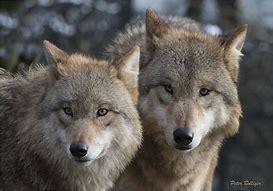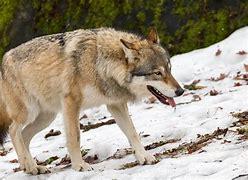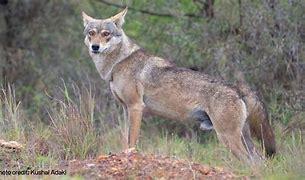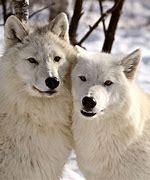Results: Throw me to the wolves and I will return leading the pack, Part three
Published on 08/18/2022
In part three, we will cover gray wolf subspecies. https://outforia.com/types-of-wolves/ is the source for this survey.

QUESTIONS
GO to COMMENTS
Comments
1.
1.
Which Mongolian wolf facts are you aware of?

The Mongolian wolf is a very close relative of the Himalayan wolf. In fact, there's a bit of debate among scientists as to whether it should really be considered its own subspecies or if it's best to include it with the Himalayan wolf.
7%
151 votes
The Mongolian wolf is traditionally found throughout Mongolia and within parts of China, Russia, and the Korean Peninsula.
7%
154 votes
At one point, the wolf population in Mongolia was estimated at about 30,000 individuals, but this number declined to about 10,000 individuals in the early 2000s as a result of regular wolf hunting. These days, the Mongolian wolf is fairly protected in Mongolia, though the wolves are still at threat of extinction.
5%
122 votes
None
78%
1799 votes
All of the above
9%
203 votes
2.
2.
Which of these Eurasian wolf characteristics are you familiar with?

The Eurasian wolf is one of the largest and most widely distributed subspecies of wolves on the planet. Traditionally, the Eurasian wolf was found throughout Europe and even parts of western Asia.
5%
122 votes
During the Middle Ages, it was extensively hunted, which led to a drastic decline in the total population. These days, there are only a few remaining populations of Eurasian wolves found on the European continent, many of which are still at threat of negative human interactions.
8%
184 votes
The Eurasian wolf is also one of the largest wolf subspecies with an average weight of about 86 lbs (39 kg). They naturally feed on species like reindeer, chamois, wild goats, and ibex, but they also occasionally prey on livestock, which is how they got such a bad reputation among humans.
7%
155 votes
None
78%
1790 votes
All of the Above
8%
185 votes
3.
3.
Which of these Indian wolf facts are you aware of?

One of the less common wolf subspecies, the Indian wolf is found throughout the country of India. It can also sometimes be found in parts of Pakistan and Iran. On occasion, it's even spotted as far away as Turkey.
5%
110 votes
For the most part, the Indian wolf lives in the Peninsular region of the country where it inhabits forested areas. However, it has also been found in parts of the Himalaya, which makes distinguishing it from the Himalayan wolf a bit tricky.
6%
142 votes
When compared to other wolves, the Indian wolf is known for being relatively small. It also has a somewhat unique fur coat with a reddish-grey upper body and a mostly white belly and legs.
5%
105 votes
None
81%
1860 votes
All of the above
7%
170 votes
4.
4.
Which of these Artic wolf facts have you heard about?

Arguably the most recognizable of the wolf subspecies, the Arctic wolf is a gorgeous canine that inhabits the northernmost regions of the world in Canada's Queen Elizabeth Islands.
12%
274 votes
While many other wolves often have light grey fur, the Arctic wolf distinguishes itself by having a nearly completely white coloration. In photos, it can sometimes be confused with other lightly colored subspecies, like the Hudson Bay wolf, but it's mostly white coat and medium-size appearance usually set it apart.
14%
318 votes
In its Arctic environment, the Arctic wolf tends to eat mostly muskoxen and Arctic hares, though it has also been known to eat caribou and even Arctic foxes. The Arctic wolf's remote location means that it's not at risk of widespread hunting by humans. However, rapidly changing climate conditions in the polar regions are a threat to the species' long-term survival.
10%
240 votes
None
68%
1568 votes
All of the above
10%
237 votes
COMMENTS


